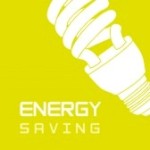 If you live in an Energy Star home or you’re in the market for one, there are definitely some benefits that come with owning one. They have great insulation. Their windows come with protective coatings that block ultraviolet sun rays. Their energy-efficient central air systems are quieter while reducing the levels of humidity within the home. They also come with appliances that are Energy Star certified; many of which use 50-60 percent less electricity than other standard models. Plus, there’s the added bonus of the fact that all of these things combined can save homeowners an average of $200-400 in utility bills annually.
If you live in an Energy Star home or you’re in the market for one, there are definitely some benefits that come with owning one. They have great insulation. Their windows come with protective coatings that block ultraviolet sun rays. Their energy-efficient central air systems are quieter while reducing the levels of humidity within the home. They also come with appliances that are Energy Star certified; many of which use 50-60 percent less electricity than other standard models. Plus, there’s the added bonus of the fact that all of these things combined can save homeowners an average of $200-400 in utility bills annually.
Perhaps that’s a big part of the reason why a study that was recently released by the University of North Carolina – Center for Community Capital reveals that another benefit of having an Energy Star home is that it is much less likely to default than other ones. How much less likely? A whopping 32 percent, to be exact.
This data was released after approximately 71,000 Energy Star single-family homes were compared to similar homes that do not have that certification. What was discovered was that no matter where the homes were located, the value of the house or the loaner’s credit history (among other criteria), consistently, across the board, Energy Star homes did not go into default nearly as much. Another interesting fact that was also published in the study is that the more energy efficient an Energy Star house proved to be, the lower the risk of default became.
These findings are insightful on a few levels with the main reason being that many of the Energy Star homes vs. the ones that were not were comparable in price. The average cost of the non-Energy Star house was $218,461 (for 2,183 square feet) and the average cost for an Energy Star home was $221,919 (for 2,283 square feet). These homes were based on homeowners who had an average income of $73,000 and lived in areas that had a 6.4 percent unemployment rate.
The revelations don’t stop there. Also, according to the study, people who live in an Energy Star home are one-third less likely to experience a mortgage default and are one quarter less likely to prepay (which is a good sign to many mortgage lenders because often when a person prepays, it alerts the lender to the fact that the homeowner may not be taking the monthly bills and interest on their loan into full account).
If you’re wondering why Energy Star homes are less likely to default, many experts believe that the answer is two-fold. One, by purchasing an energy efficient home, homeowners are saving money on monthly energy expenses (there’s less of a need to use more electricity or to call companies like ConroeAir.com to service appliances). And secondly, when you are in the position of being able to save money, you can put it towards paying other bills; ones like your mortgage.
So, if you needed one more reason to be “sold” on an Energy Star one, this would definitely be it.
It’s good news not only for homeowners but mortgage lenders too.

1 Comment
I’d not heard of Energy Star homes, but it’s a great idea! Here in the US we have Energy Star appliances that we have bought. Our house was built in 1977 during the oil crisis and was built to be more energy efficient. It has really saved us a lot of money over the years. It is very well insulated and has double-pane windows with a vacuum between the panes. When we first moved in from an apartment, our heating and cooling bills were lower than they had been in our apartment. We are very happy with our energy saving home. An Energy Star home sounds great!